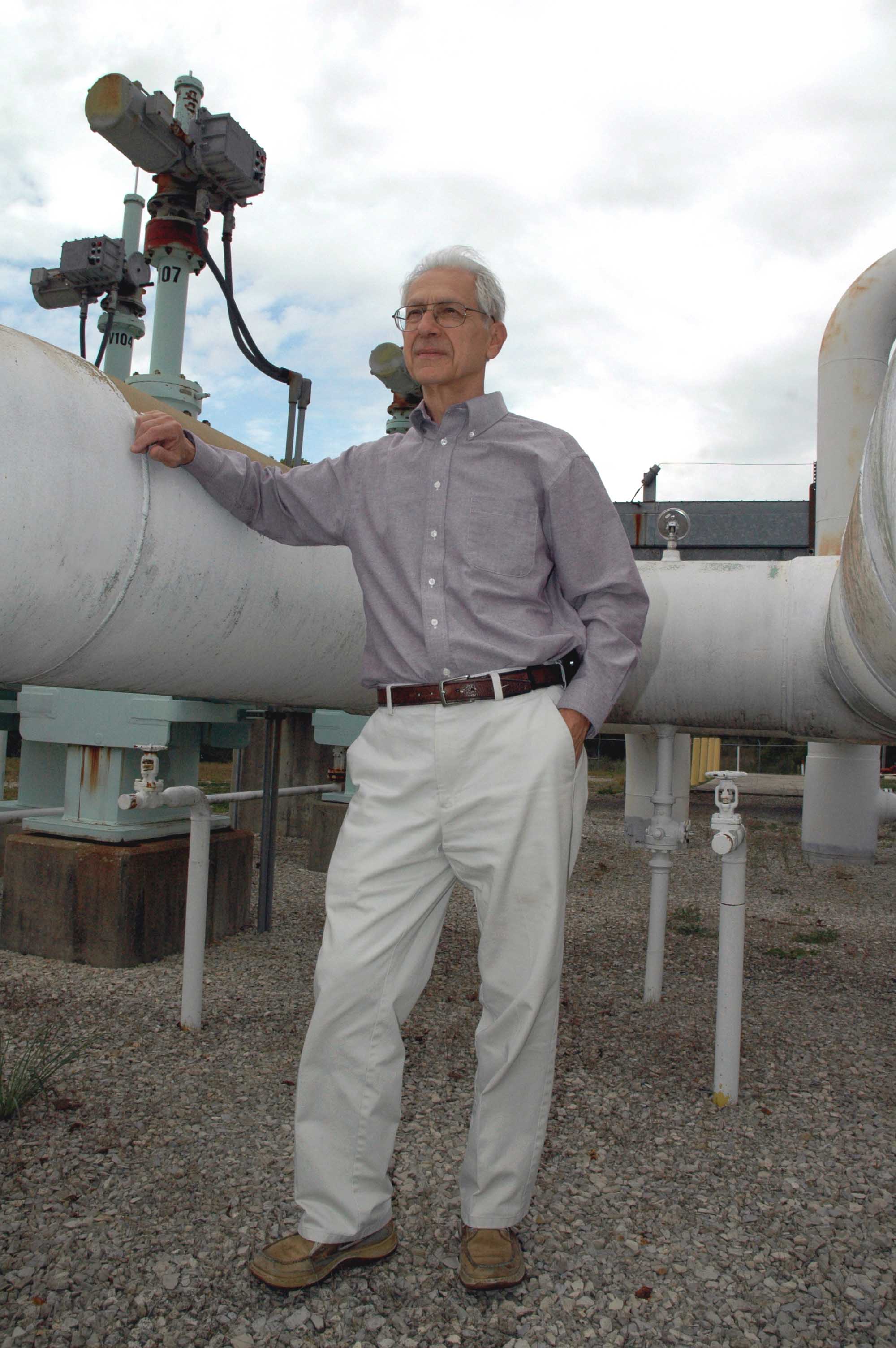November 2012, Vol. 239 No. 11
Features
Battelle An Important Link In Pipeline Research

For more than 80 years Battelle Memorial Institute, based in Columbus, OH, has earned a worldwide reputation as leader in science and technology. The world’s largest not-for-profit research and development organization, with over 20,000 employees at more than 100 locations globally, was established as a charitable trust in 1929 by industrialist-turned-researcher Gordon Battelle, who felt that business and scientific interests could benefit social good by working together.
Among its impressive contract research portfolio and laboratory work is an Energy, Environment & Material Sciences program that is second to none. And within that realm, work continues on aspects that are vital for improved operations of natural gas and oil pipeline companies.
Pipeline Research Council International (PRCI) has long worked with Battelle on projects designed to improve operations for oil and gas companies. Its president, Cliff Johnson, has high regards for Battelle.
“Battelle has been a key contractor and research partner for PRCI since our inception, with Battelle retained to take on the first project challenge for PRCI when it formed in 1952. As the industry continued to grow and develop in the U.S. and internationally, Battelle provided much of the fundamental R&D for pipeline integrity and operations, including studies on materials and construction, fracture mechanics, and pipeline inspection technology development. PRCI continues to work directly with Battelle as a key resource to support PRCI’s R&D program.”
This first of two parts will focus largely on pipeline integrity – the single-most important issue that faces the industry today as well as inline inspection technologies which Battelle helped develop. Senior Research Leader Brian N. Leis, who heads the Battelle Pipeline Technology Center, discusses some of the work involved at the Center which includes the Pipeline Simulation Facility. During the interview, he details Battelle’s major pipeline activities delving into its past, its current array of projects, and offers a glimpse into the future.
P&GJ: What is the history of the Pipeline Simulation Facility and how is it being used to meet the challenges involving pipeline integrity issues?
Leis: The Pipeline Simulation Facility resulted from the 1987 PRCI report that described the needs of the pipeline industry. The goal was to provide technology-based solutions to mitigate operational risks. The facility would allow researchers and industry experts to focus on generating and implementing cost-effective technologies for assessing, monitoring, and improving pipeline integrity without needing to concentrate on developing facilities to assess the new technology.

From 1989-95, small- and large-scale equipment was built with FERC funding administered by the Gas Research Institute under the supervision of an industry committee. An outdoor pull rig, built in 1992, is still in use. The pull rig consists of four 300-foot lengths of pipe with diameters of 12, 24, 30, and 42 inches.
Inspection tools can be pulled through these pipe lengths at speeds up to 15 mph. While most pigging vendors have pull rigs, the length, speed capability and pull force of this facility is unique. Each line contains carefully controlled defects for the development and assessment of inline inspection tools. Liquid coupled ultrasonic tools can be pulled in the 12-inch line with a recently added water tank system.
The main component was a full-scale flow loop. This was one of the few places, outside of an operating line, where technology could be evaluated using this sophisticated measurement methodology. The loop was over a mile of pipeline that operates at pressures up to 1,000 psi and at flow velocities up to 10 mph. Through the process of construction, operation, maintenance, and management, Battelle has gained a significant understanding about the daily challenges facing pipeline companies.
For a decade, inline inspection companies used the facility to test new tool designs. Pipeline mapping pigs that used inertial guidance technologies were tested. Consecutive laps enabled the development and assessment of drift correction algorithms for variables such as velocity and surging. Speed control, crack detection, and mechanical damages assessment pigs were also tested. Two prototype pigs did get stuck in our pipeline, but this was far better than having a pig get stuck in an operating pipeline.
Because of the method of operation, the compressors and valves required extensive maintenance. The dozen mainline values would be cycled 40 times a day, which would represent years of service in an operating pipeline. The compressors would go through multiple start/stop cycles each day of operation, which is, again, uncommon for this type of equipment. After about a decade, the maintenance costs made it uneconomical to continue operation. The piping is still in place but the compressors have been sold to a refurbisher for parts.
P&GJ: What particular aspects of pipeline research is Battelle best known for? And what are some of the tools and systems developed at Battelle that have found their way into the oil and gas pipeline industry?
Leis: For more than 60 years, Battelle has provided its global customers with sound and innovative science- and engineering-based solutions in pipeline technology. The range of service offerings provided is grounded in our years of experience working in the field with the pipeline operators to understand first-hand the issues being encountered, as well as by our extensive laboratory facilities that allow us to perform structural and chemical testing of pipeline material samples.
Our technical staff often develops unique approaches to solve the challenging problems typically encountered in the pipeline industry, as demonstrated by our patents in inline inspection technologies, for example. Our years of experience covering the multiple aspects of pipeline safety and integrity have provided us with a unique ability to identify, analyze, and interpret the data needed to make sound judgments regarding pipeline operation.
In the early 1970s, Battelle developed the criterion embodied in the American Society of Mechanical Engineer/American National Standards Institute and referenced as the B31G Corrosion Assessment Criterion. In the late 1980s, Battelle developed the RSTRENG® software for improved analysis of corroded pipe on personal computers, a large step for that period.
The 1970s also saw the development of the Battelle Two-Curve Model (BTCM) as the basis to predict fracture control for natural gas and super-cooled liquid pipelines, which is still broadly used today. This was the basis for the Battelle Simplified Equation to predict arrest toughness requirements, which is one of the ASME-cited practices for such applications.
When tougher steels became an issue as higher-strength grades emerged, the BTCM was found to underestimate arrest toughness, with a correction published in the late 1990s to address this for grades up through X70. Validated by blind predictions that were the basis for the fracture control plan for the advanced design Alliance Pipeline, this work now provides the basis for continued developments as the basis for fracture control of X80 through X100, with current work under way in the context of the next (3rd) West to East Pipeline in China.
Work in the 1990s also focused on optimizing the hydro-testing practice to develop protocols that maximize test effectiveness while limiting the possibility for pressure reversals, which led to the so-called spike test. Related work identified that, as the toughness of the steels increased hydro-testing became ineffective, which led to analysis of the viability of inspection-based alternative integrity verification schemes. Such alternatives have been considered in the context of offshore pipelines. At least one demonstration line is in evaluation for an onshore pipeline.
Work in the new millennium has helped to develop the technology base for integrity management of onshore pipelines and contributed to various aspects of B31.8. This activity also contributed to the development of the direct-assessment technologies, which now are codified by NACE for internal and external corrosion, and for stress-corrosion cracking (SCC).
In other work since the early 1990s, Battelle has developed additional analysis models for SCC, mechanical damage, wrinkle bends, and defect assessment – with such work continuing and predictive tools emerging.
For example, several ongoing projects are dealing with mechanical damage and tools to manage ERW seam defects. Work in these aspects parallels our general approach, as evolving inspection technology to determine condition is being coupled with developing assessment models and practical tools as the basis for integrity management.
P&GJ: In addition to pipeline integrity, what are some of the key areas involving energy pipelines that Battelle is working on today? SCADA, compression, leak detection, corrosion control, coatings, welding?
Leis: In addition to work directly related to pipeline integrity, Battelle has been heavily involved with the development of inline inspection (ILI, also termed smart pigging) technologies since the late 1980s. ILI is one of the three accepted practices to quantify the physical condition of the pipeline, the others being hydro-testing and direct assessment – which have been briefly noted above.
The objective of Battelle’s work involving ILI has been to develop, improve, and provide unbiased information on inspection capabilities for liquid and gas transmission pipelines. Our facilities include a set of test platforms for studying improvements to inspection technologies and a number of pipe segments containing defects with which the capabilities and limitations of inspection tools can be evaluated.
Battelle regularly conducts programs on inspections using magnetic flux leakage, ultrasonic, and electromagnetic technologies. Battelle is developing designs for the next-generation of smart pigs to allow them to inspect for mechanical damage, find stress corrosion cracks, and locate coating disbonds.
In addition, Battelle has evaluated the effectiveness of pigging in terms of risk reduction and as a function of inspection tool capabilities. Using this work, Battelle has developed methods for assessing the benefit-to-cost ratio of repairs and re-inspection. Battelle is poised to provide value-added services in tool selection, run verification, data interpretation, and result verification to ensure the inline inspection results provide the most reliable and understandable data for integrity assessment.
Your question also addressed aspects such as SCADA, compression, leak detection, corrosion control, coatings, and welding. While we have little to do with compression, save for work on failure analysis of components in prime movers, we are engaged in work involving the other topics through third-party reviews, and have major research activities regarding corrosion control and coatings, and welding.
Battelle’s expertise has long been used to assist in pipeline failure analyses, evaluating SCC susceptibility, and selective (seam) corrosion. Corrosion capabilities encompass testing and modeling, which is done in conjunction with Battelle’s state-of-the-art materials characterization facility.
Facilities exist to evaluate the susceptibility to hydrogen-induced cracking and sulfide stress corrosion cracking, with electrochemical equipment such as potentiostats and frequency response analyzers used to characterize corrosion reactions and evaluate the efficacy of coatings. Autoclaves are also available ranging in size up to 23 liters and pressures up to 5,000 psi for simulating high pressure pipeline conditions.
Battelle is one of the few research facilities that routinely handles hydrogen sulfide gas in its corrosion studies to simulate sour well conditions in pipelines and associated pipeline equipment. Finally, regarding welding, Battelle has been developed advanced computational procedures for welded structures based on the fundamental studies on welding induced thermal and mechanical responses. These procedures have been adopted by ASME and API.
Battelle also has developed the structural stress method, known as Verity®, a patented methodology for fatigue evaluation of the welded structures. This method and its design procedures have been adopted as design weld fatigue codes by ASME and API. A classification society is working with Battelle for adopting this method as part of their fatigue guidance.
While a significant portion of work is directly related to pipeline integrity, other projects involve assessment of leak detection technology, compression as it relates to carbon dioxide utilization and storage, analytical and experimental assessment of pipeline welds, corrosion assessment and detection of disbonded coating using pigs. The details of any of these subjects are better covered by the numerous paper and conference presentations by Battelle staff.





Comments